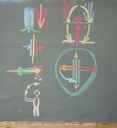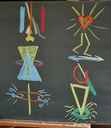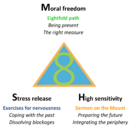Course Content
-
0 / 3
Introduction
-
0 / 4
1. Pay attention to your thoughts
-
0 / 4
2. Decide with care
-
The right judgment8:14

-
Eurythmy, Offer, Task6:51

-
Demonstration with variations of the “AU” gesture37:35

-
The helpers from beyond: D and T23:40

-
-
0 / 4
3. Mindful speech
-
The right word9:15

-
Eurythmy, Offer, Task10:14

-
Demonstration with variations of the “Ai” gesture47:50
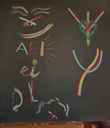
-
The helpers from beyond: F and V19:34

-
-
0 / 4
4. Care filled deeds
-
The right deed7:35

-
Eurythmy, Offer, Task7:02

-
Demonstration with variations of the «E» gesture48:43
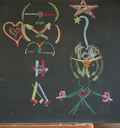
-
The helpers from beyond: W, S and R18:22

-
-
0 / 4
5. Careful composition of life
-
The right standpoint4:24

-
Eurythmy, Offer, Task9:22

-
Demonstration with variations of the «I» gesture44:15
-
The helpers from beyond: B, P and H24:27

-
-
0 / 4
6. Serving your surroundings
-
The right striving4:21

-
Eurythmy, Offer, Task10:10

-
Demonstration with variations of the «O» gesture49:03
-
The helpers from beyond: G, K and N29:27

-
-
0 / 4
7. Learning from life
-
The right memory8:12

-
Eurythmy, Offer, Task10:00

-
Demonstration with variations of the «A» gesture47:06
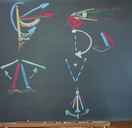
-
The helpers from beyond: C, Ch and R24:44

-
-
0 / 4
8. Becoming One
-
The right mindfulness10:30

-
Eurythmy, Offer, Task16:35

-
Demonstration with the vowels and «TAO»52:51
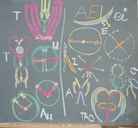
-
TAO - Sun19:10

-
-
0 / 4
History and meaning of the path
-
The stages of the path

-
The Noble Eightfold Path of the Gautama Buddha

-
Rudolf Steiner's Eightfold Path

-
The path, the beatitudes and the exercises of „Nervous conditions in our time“
-
-
0 / 1
Appendix
The helpers from beyond: L and M
In 1912, in his very first eurythmy lessons, Rudolf Steiner describes the consonants as a reaction to external influence in contrast to the vowels that weave within and reveal this inner being.
L and M
With the L, one should try to become aware of the freedom of development everywhere in nature, to experience it and to try to express this feeling through a movement of the arm and hand.
Of course, it can be seen most clearly in what is similar to plants. The grasping and gathering strength in the region of the roots, the carrying up of the juices through the stem, the gradual unfolding of the leaves, the lighting up of the flowers and finally also a sinking back to the earth in the withering. "You should be able to express an entire year in this movement."
But also in the watery, in the airy, even in the formations of the earth, in the piling up of the mountains, in the gentle waves of the hills one should learn to feel this free expandability. "But you must never want to express this sound with your feet."
With the M, one should, stepping forward, direct all of his attention, all of his groping sensation, towards feeling the Something in which one is moving. In warmth or cold, in humidity or freshness, in rain or fog. Feel how the wind blows past your body, or how water has to be displaced when you are perhaps walking through a stream. How differently you walk on a level path than through tall grass, differently over sand than on stony ground.
Yes, at first the hands should only be bent up and down so that you can feel the space above your own head. «Feeling yourself in something».
Lory Maier Smits from her lessons with Rudolf Steiner, September 1912, GA 277a




